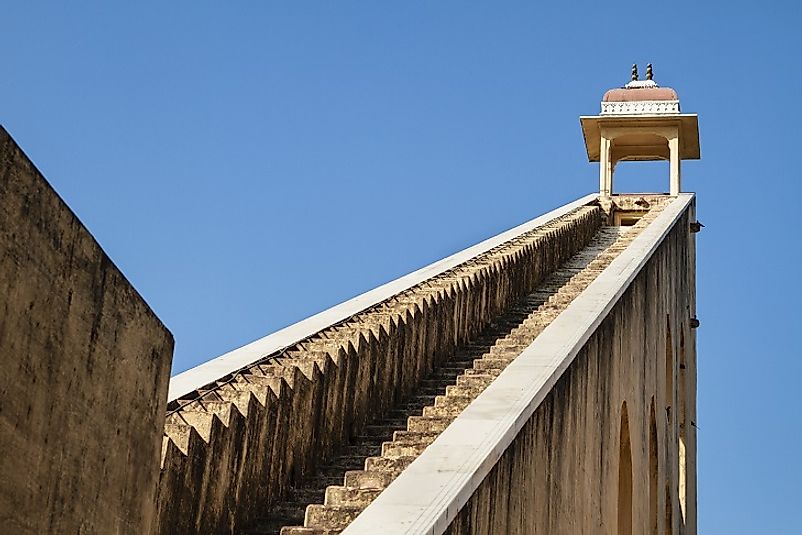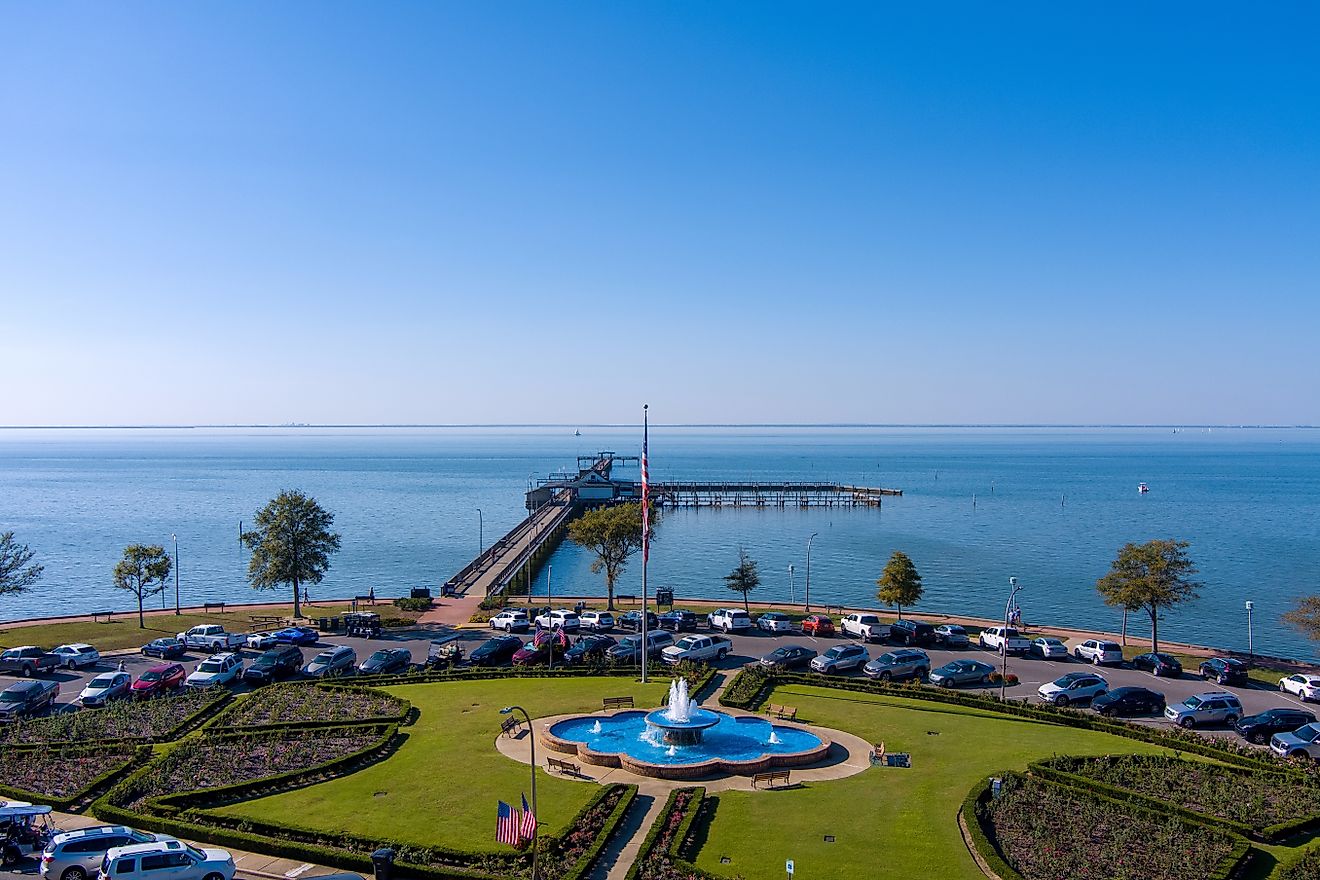The World's Largest Sundial

The Jantar Mantar of Jaipur, Rajasthan in India is one of the five Jantar Mantars of India. The others are found located in Delhi, Varanasi, Ujjain, and Mathura, and were constructed by the highly erudite Hindu king, Maharaja Jai Singh II in the 18th Century. The Jantar Mantar in Jaipur is one of the most sophisticated ancient astronomical observatories, hosting the largest sundial in the world. The observatory was probably completed around 1738. There are 20 instruments in the observatory which are built primarily of stone and marble, while mortar, bricks, and bronze tablets had also been used. The observatory spreads out over an area of around 18,700 square meters, and was in use until 1800. Recognizing the immense architectural, historical, and astronomical significance of the Jantar Mantar of Jaipur, it was declared a World Heritage Site by UNESCO in 2010.
4. Astronomical Role
The instruments at Jantar Mantar represent the high level of sophistication achieved in the sphere of knowledge about astronomy in India in the 18th Century. It also reflects the supreme level of astronomical skills achieved by the scholars of that time. The instruments at the Jantar Mantar are examples of outstanding masonry and architectural skills intertwined with scientific knowledge. The instruments perform various functions like detecting the time of the day, inferring data on the celestial objects and constellations and their positions and movements, as well as predicting the timing of eclipses. The most famous of these instruments is the 27.4-meter-high Samrat Yantra, which is able to predict time within an accuracy of only 2 seconds difference from the local Jaipur time. The high accuracy with which these ancient instruments represent astronomical data has amazed modern-day scholars, astronomers, and the common man.
3. Religious Significance
The astronomical observatories of Jantar Mantar are not only known for their astronomical and architectural value but also for their close relation to the Hindu religion. Maharaja Jai Singh II, a devout Hindu ruler, built the observatory based on the astronomical data found in ancient Hindu texts. He was a great scholar who scourged through various ancient texts to find instructions on the construction of the instruments in Jantar Mantar. Though there is no mention of astronomical instruments in the Vedas, there is a description of some astronomical instruments, such as the gnomon and clepsydra detailed in the Vedangas. Astronomical concepts are also discussed in various other Hindu texts like Arthashastra and the accounts of famous Hindu astronomers of the ancient world. It is believed that the instruments in the Jantar Mantar were built with inspiration and knowledge obtained from such ancient texts of Hinduism.
2. Tourism and Depictions in Pop Culture
The Jantar Mantar is quite a popular tourist destination in India and visitors flocking to the Pink City of Jaipur never miss the opportunity to visit the Jantar Mantar in this city which is located near two other major tourist attractions of Jaipur, the Jaipur City Palace, and the Hawa Mahal. Nearly 700,000 tourists visited the observatory annually between 2006 and 2008. Most of the instruments of the Jantar Mantar are presently in a working state and guides and staff at the observatory usually explain the working of these instruments to the curious tourists. The Jantar Mantar has been heavily photographed by international media and also served as the filming location of 2006 adventure fantasy film “The Fall”.
1. Threats and Preservation
A few threats, such as environmental pollution, heavy tourist footfall (often followed by littering on the compound), and damage to the foundation from water during the rains, appear to threaten the Jantar Mantar at Jaipur. However, the observatory is kept under strict monitoring by the staff of the Department of Archaeology and Museum of Rajasthan, who are responsible for ensuring the repair of damages and the elimination of other threats with a potential to damage the observatory.











